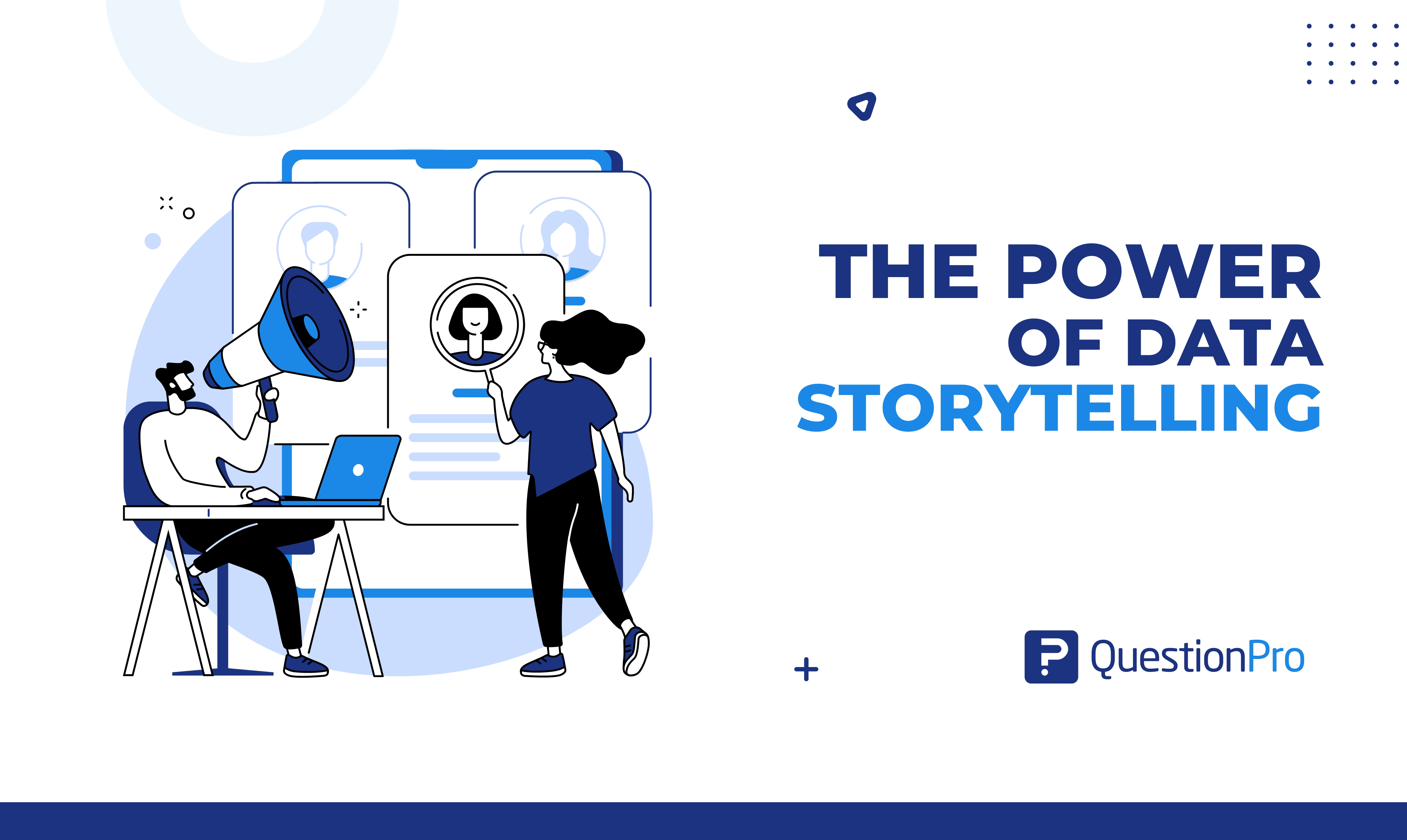
In the world of UX, CX, and market research, insights teams need to incorporate stories into their deliverables. This is because insights are more readily understood and operationalized when they are presented in the context of some larger story or narrative.
By weaving a compelling narrative around their findings, insights teams can help decision-makers grasp the significance of the information and use it to inform their strategies and actions.
LEARN ABOUT: Marketing Insight
One way to achieve this is through data storytelling and the use of insights repositories. Below we explain in detail everything you need to know to start sharing data more effectively and attractively.
What is data storytelling?
Data storytelling is the practice of using data to tell a story. It involves using data to support a narrative and help people understand the presentation’s significance. Data storytelling can be a powerful tool for explaining complex concepts and ideas in a way that is easy for people to understand and remember. It can also be used to persuade people to take action or make decisions based on the presented information.
Why are stories so effective at communicating insights, and how can insights teams incorporate them into their work?
First and foremost, stories effectively communicate insights because they help put information into context. When insights are presented in the context of a story, decision-makers can see how they fit into the larger picture and understand not only what the insights are but why they matter and how they can be used to inform strategic decisions. This can be particularly valuable for decision-makers who may not have a background in UX research, CX, or market research and can help to ensure that the insights are easily understood and actionable.
Also, stories effectively communicate insights because they are engaging and memorable. People are more likely to pay attention to and remember information when it is presented as a story rather than as a dry list of facts and figures. By weaving a compelling narrative around their findings, insights teams can help capture decision-makers attention and imagination and ensure that the insights are more likely to be retained and used effectively.
Furthermore, stories effectively communicate insights because they can help build trust and credibility. When insights teams present their findings in the context of a story, they demonstrate a commitment to providing high-quality, reliable information that decision-makers can trust. This can establish the insights team as a valuable resource and partner within the organization and help build trust and credibility with external stakeholders, such as customers and partners.
Advantages of Data Storytelling
There are several advantages to using data storytelling as a way to communicate your research results. Among these benefits are::
- Improved understanding: Data storytelling can help people understand complex ideas and concepts more easily. Using visuals and clear language, data storytelling can make information more accessible and easier to understand.
- Enhanced decision-making: Data storytelling can help people make more informed decisions. By presenting information clearly and compellingly, data storytelling can help people understand the significance of the data and make more informed choices.
- Increased engagement: Data storytelling can be a more engaging way to present information than simply presenting raw data. Using a narrative structure and visualizations, data storytelling can hold people’s attention and keep them engaged with the presented information.
- Improved communication: Data storytelling can help improve communication between different stakeholders. By presenting information clearly and concisely, data storytelling can help people from different backgrounds and with different levels of expertise understand and discuss complex ideas.
- Increased accountability: Data storytelling can help hold people accountable for their decisions and actions. By presenting information clearly and transparently, data storytelling can help ensure that people make decisions based on accurate and up-to-date information.
How can insights teams incorporate stories into their work, and what role do insights repository platforms play in this process?
One of the key ways that insights teams can incorporate stories into their work is by using an insights repository platform. An insights repository is a centralized platform or database where research and insights can be stored, organized, and accessed by UX, CX, or market research team members. By using an insights repository platform, insights teams can easily access past projects and their findings and can use this information to identify trends and patterns over time.
For example, let’s say that an insights team is conducting research on customer satisfaction with a particular product or service. By using an insights repository platform, the team can quickly and easily access past research on customer satisfaction and can use this information to identify common themes and patterns. This can help the team build a more comprehensive understanding of customer satisfaction with the product or service and inform the design and execution of their current research project.
Once the team has gathered their findings, they can use the insights repository platform to organize and analyze the data and to identify key insights and trends. This can be particularly valuable for insights teams working on large, complex research projects, as it can help ensure that the findings are organized and presented clearly and coherently.
Once the insights and trends have been identified, the team can use the insights repository platform to weave them into a compelling narrative. This may involve using the platform to create visualizations, such as graphs and charts, that help to illustrate the key insights and trends. It may also involve using the platform to write and organize a narrative that explains the background and context surrounding the insights and that illustrates how they fit into the larger picture.
In conclusion, an insights team needs to embed its findings into stories. And an insights repository is a powerful way to make this happen.







